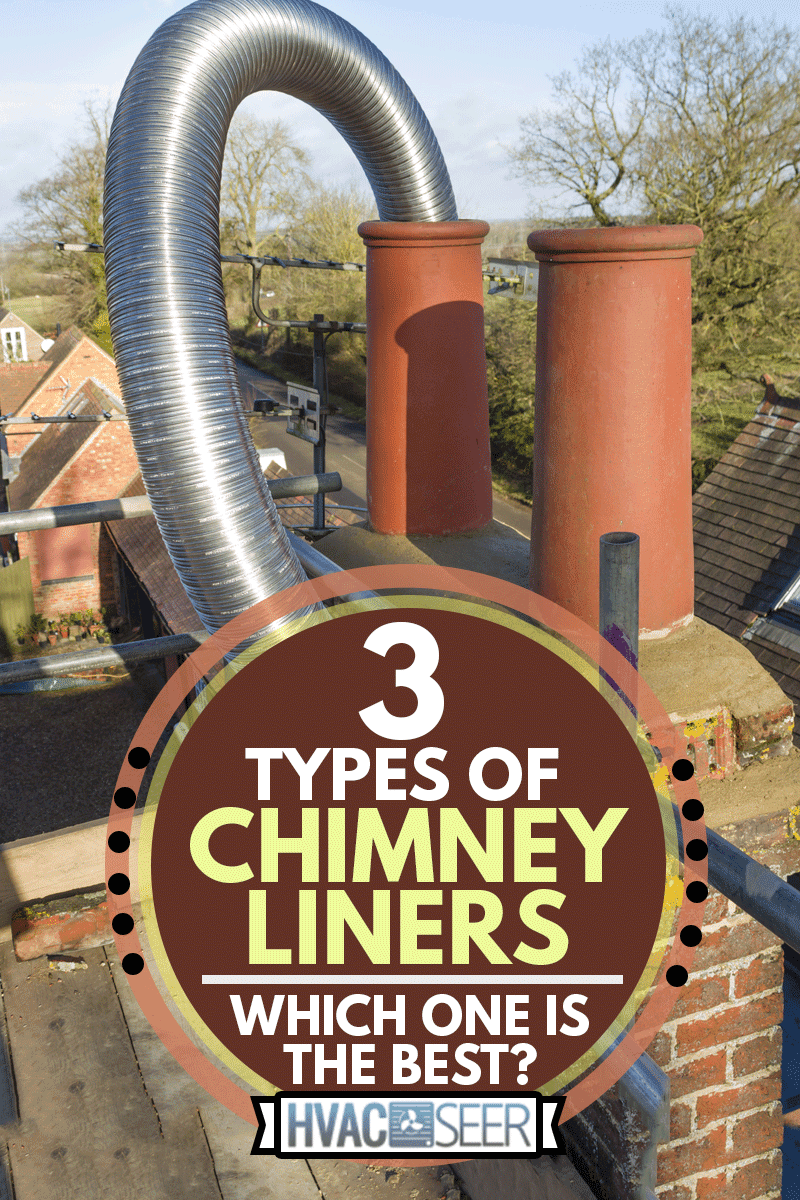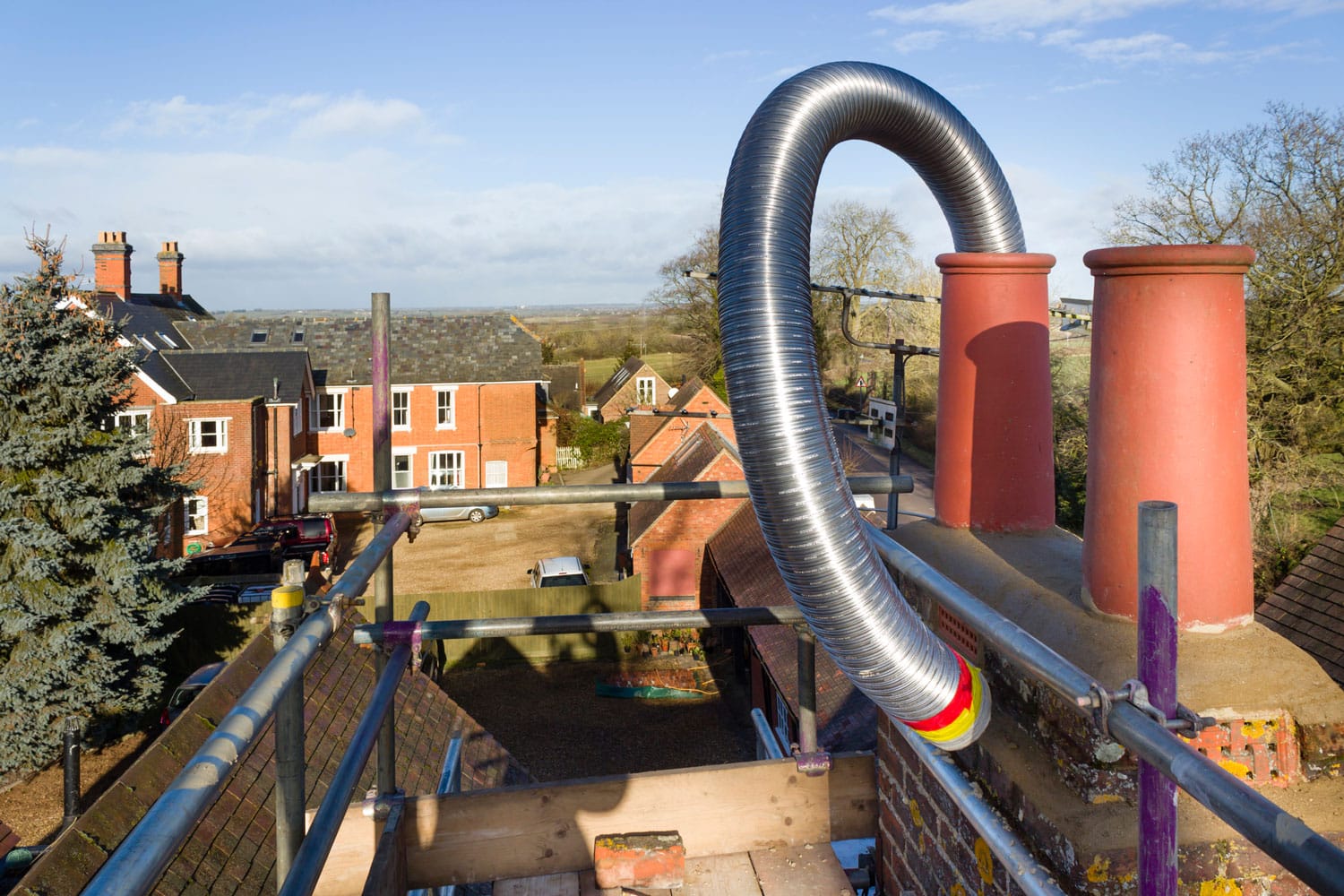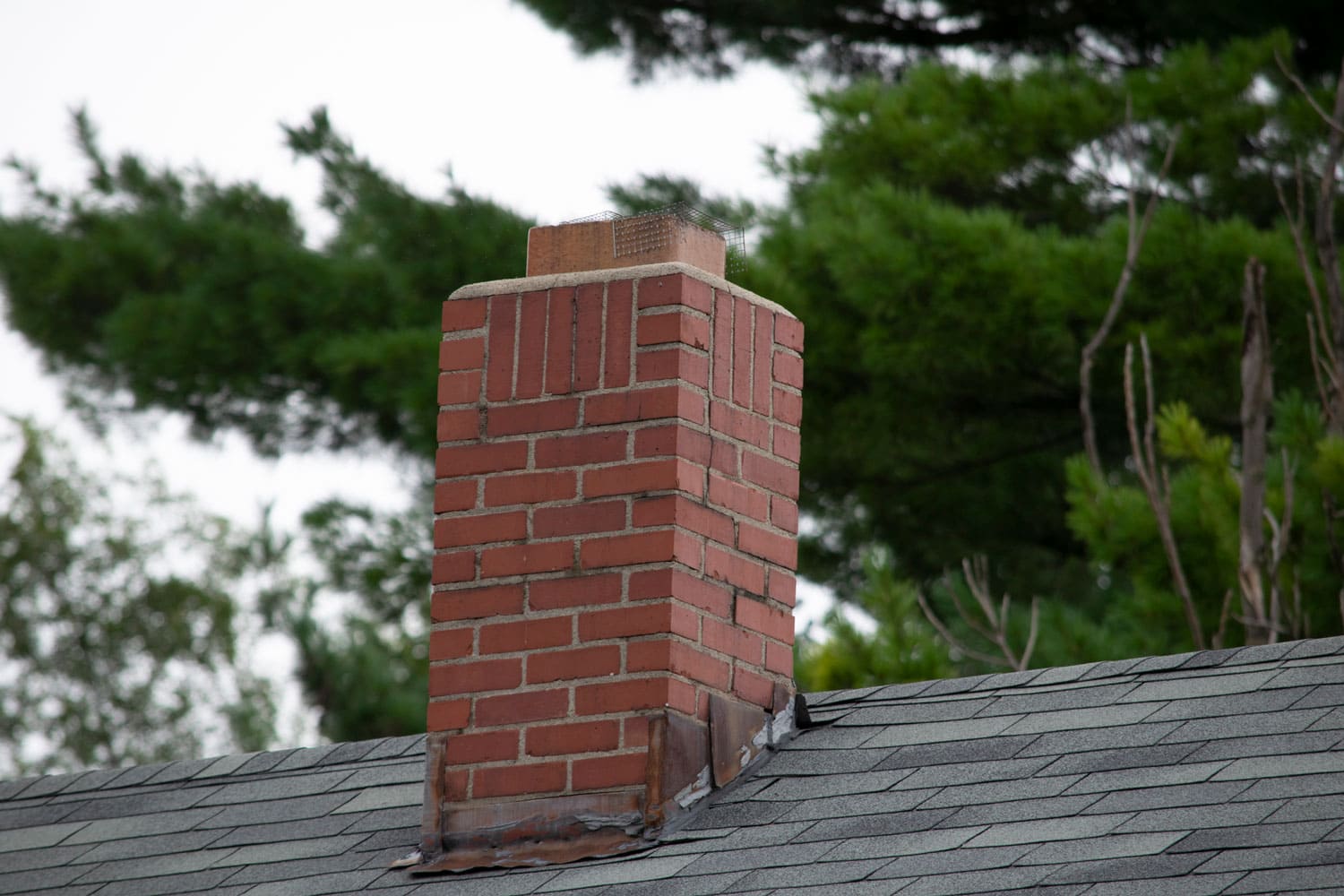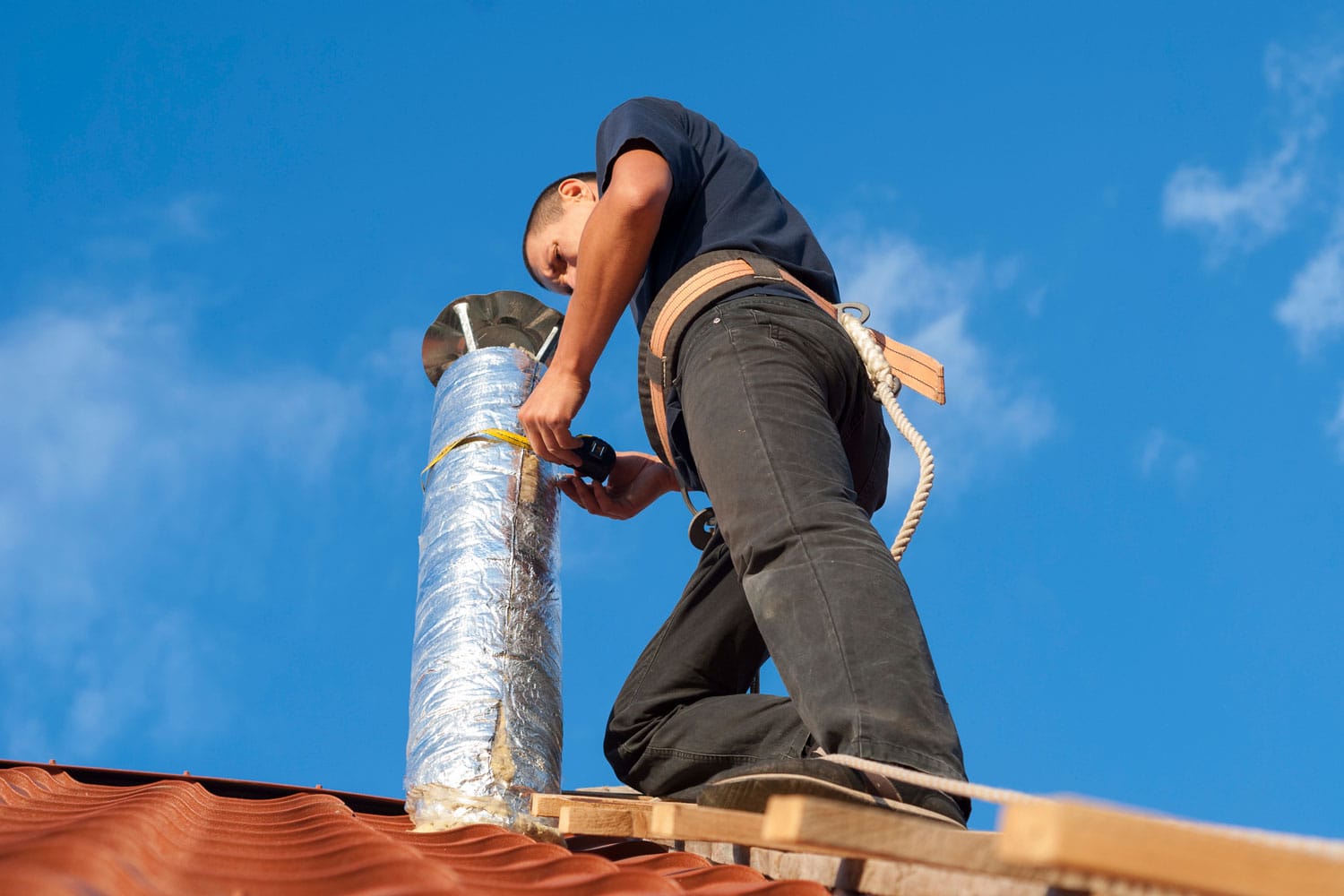Homes that use a wood stove, coal stove, gas fireplace, or a traditional fireplace all require a chimney. Inside that chimney is a liner that helps to protect your home from the heat, embers, and flames of the fire. If you have a chimney and use your fireplace or stove often, it may be time for a new chimney liner. But what is the best chimney liner to use?
A chimney liner is a lining inside your chimney, essential in keeping your home safe and keeping the flue fumes flowing out of your home. There are three main types of chimney liners:
- Clay Chimney Liners
- Metal Chimney Liners
- Cast In Place Chimney Liners
Chimney liners are essential to the health of your heating system and the protection of your home. Now that we know what the three main types of liners are, read below to learn more about each of these options. We'll also discuss heatshield for chimney liners, how long your liners will last, how you'll know if your chimney needs a liner or not, and if your chimney should be insulated.

1. Clay Liners
Originally clay liners were used by masons when building chimneys and helped keep the home safe from the damages of wood heat. Generally, clay tile liners are not safe for gas or oil heating systems. Gas and oil fires release vapors. These vapors can damage clay tile liners and jeopardize the safety of your home. Although clay liners are a popular option due to their low cost, they have to be replaced and repaired more often than other liners.
- Type of Fuel: Wood
- Average Cost: $2,000 - $7,000
- Life Expectancy: 30 - 50 years, depending on how well the liner is maintained

2. Metal Liners
A favorite amongst the construction and mason worlds are metal chimney liners. These liners are designed in many shapes and sizes. The liners can be rigid or flexible to fit the need of your chimney. Installation and parts for these liners are generally inexpensive. With proper maintenance, metal liners can last a long time.
Metal liners make it easy to update your liners when you're updating your home's appliances or heating system. Metal liners can also be placed over damaged clay tiles, restoring the function of your chimney flue. Due to their flexibility, versatility, and ease of installation, metal liners are generally considered the best choice.
- Type of Fuel: All fuel types
- Average Cost: $900 - $4,000 depending on size and material
- Life Expectancy: 15 years or more, higher-end stainless steel liners often come with a lifetime warranty

3. Cast In Place Liners
If you have a chimney with structural problems or a clay liner that is cracking, a cast-in-place liner may be the best choice. The chimney lining is created with an insulated mortar-like mixture that is great for filling in deteriorating mortar joints and cracks in your chimney. This helps maintain the structure of your chimney.
The insulative properties of the lining help keep heat from leaking from the chimney. The chimney's higher temperatures allow creosote, soot, and combustive gases to be more fully consumed, creating a cleaner, safer flue. The cost of liner can be expensive depending on your chimney's size and condition.
- Type of Fuel: All fuel types
- Average Cost: $2,000 - $7,000 depending on size and the condition of the chimney
- Life Expectancy: 30 - 50 years, depending on how well the liner is maintained
Sealant For Chimney Liners
After years of use, your chimney liner may develop areas of wear and tear, or chips and cracks may occur. If you notice any issues with your liner, a sealant such as HeatShield may help bring your liner back to life. The sealant can be used to patch small cracks in your liner. If there is damage to a larger area and a complete coating is needed, a sealant can be a quick fix.
When replacing a liner, a sealant can be used on the chimney's interior before sliding in the new liner. The inside of the liner can then be coated with a sealant for extra protection. The sealant will help vent flue gases and keep your chimney clean and functional for years to come. Check your sealant to ensure it can be used with your fuel type.
How Long Do Chimney Liners Last?
Chimney liners are essential in helping to keep your home warm and safe. But, how long your liner lasts will vary on quite a few conditions, such as:
- the type of fuel you burn and the quality of that fuel,
- how often your chimney is cleaned and maintained,
- the material and quality of your chimney liner, and
- the condensation levels.
Clay and cast-in-place liners can typically last up to 50 years with proper maintenance. Metal liners can last 15 to 25 years on average, with regular cleaning and maintenance. High-quality liners often have lifetime warranties.
How Do You Know If Your Chimney Needs A Liner?
The first thing you should ask yourself is, "Does my chimney have a liner?" If you answered no, you should probably invest in a good chimney liner. Many municipalities across the country even require a chimney liner. Check your chimney walls. If your chimney walls seem to be deteriorating faster than normal, that's a sure sign you need a liner.
Condensation in your chimney can cause many problems. Check your chimney for any condensation. If this occurs, a liner will help insulate and keep condensation out.

Should A Chimney Liner Be Insulated?
Insulating a chimney liner is a great idea. Not only may it be mandatory in your area (always check your local building codes), but insulating your liner has many benefits. Keeping your chimney liner warm with proper insulation will help enhance the draft ability.
In addition, insulated liners will also help reduce condensation. Condensation can cause metal liners to deteriorate faster, and the liner may need to be drained. A warm chimney with less condensation will also help prevent the build-up of creosote and other corrosive materials.

Summary
Chimney liners are almost essential in keeping your chimney and heating system in proper health. They come in three main varieties; clay, cast-in-form, and metal. The price of liners will vary on the type and the condition of your chimney. Although each type of liner has its own benefits, metal liners are the popular choice. Make sure to keep your liner properly maintained and cleaned. Adding insulation will help to keep your liner and chimney in good condition, extending its life.
Before you go, make sure to check out these other articles:
Do Vented Gas Fireplaces Need A Chimney? [Or how else to vent them]
